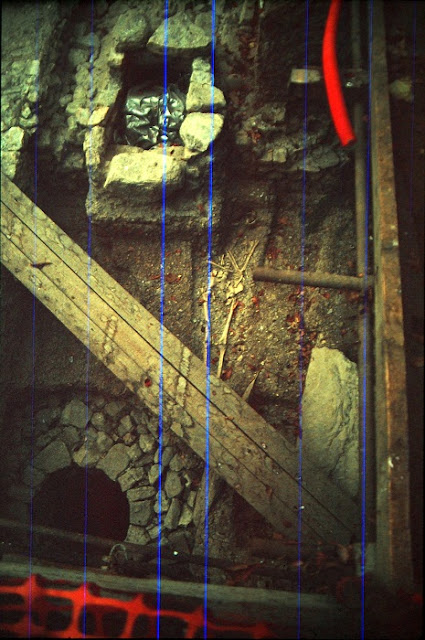Grenoble Archaeological Museum | The Church & graveyard
In recent posts, I’ve
concentrated on some of the treasures on display at the Musee de l'Ancien
Eveche, but now I want to turn my attention to the wonderful Grenoble
Archaeological Museum. If one were to be pedantic, I’m sure the case could be
made that the museum is slightly miss-titled – it’s not so much a museum
dedicated to the archaeology of Grenoble, but to the historic church site of Saint-Laurent.
However, it’s just as true to say that the archaeology of Saint-Laurent is in
no small part, the archaeology of Grenoble too. The church as it survives today
is a intricate set of building phases and burial activity. However, the core
upstanding structure is Romanesque (12th century) and the burials stretch back
to the Gallo-Roman period (4th century). So far, so good! But what really sets Saint-Laurent
apart from … well, pretty much anything else … is that fact that it has a
surviving Merovingian crypt from the 6th century. Coming from Irish
archaeology, where even ruins of anything before the 10th century are
relatively rare, a complete 6th century crypt never ceases to amaze me!
The site has been
investigated in one form or another since the early 19th century, and the crypt
was rediscovered in 1803. Activism by a number of prominent individuals
(including Jacques Joseph Champollion-Figeac, older brother of Jean-François “Rosetta
Stone” Champollion) led to the crypt being recognised as an historic monument
in 1850. This protection was extended to the whole site in 1977 and a
spectacular series of excavations began in 1983, followed by its opening to the
public as a museum in 1986. When I first visited, in 2000, parts of the
excavated cemetery withing the former cloister were roofed with corrugated
plastic sheeting on a framework of scaffolding poles. It gave the area a
feeling that the archaeologists had just left for their tea break and, if you
could just find it, they were sitting chatting happily. The museum closed in
2003 for extensive renovations, only reopening in 2011. While I loved the older
version of the museum, this new & improved facility is simply stunning.
There are new displays; an excellent history of the site projected on one wall
of the church; and a new glass roof over the excavated portion of the cemetery.
This latter area still retains the set dressing of delicately placed buckets
and clip-boards of context sheets and manages to retain the ‘archaeologists
will be back in 20 minutes’ look.
 |
| Graveyard as photographed in 2000 |
Excavations across the
complex have uncovered some 1500 human burials, ranging in date from the 4th to
the 18th centuries. One particularly densely used and reused area was the site
of the former cloister. Analysis of the burials has shown that a variety of
burial forms were used over time. Some that can be seen in the images here
include simple stone-lined and plain graves. However, I find the one that looks
like a terracotta land-drain fascinating. It appears that a body – probably
wrapped in a shroud – was laid on a series of flat tiles. Further tiles were
then placed one either side to form a triangular structure over the body, in
lieu of a coffin. The whole was capped with a row of semi-circular sectioned
tiles to hold it together before the grave cut was backfilled.
 |
| Graveyard as photographed in 2000 |
 |
| Graveyard as photographed in 2000 |











Comments
Post a Comment